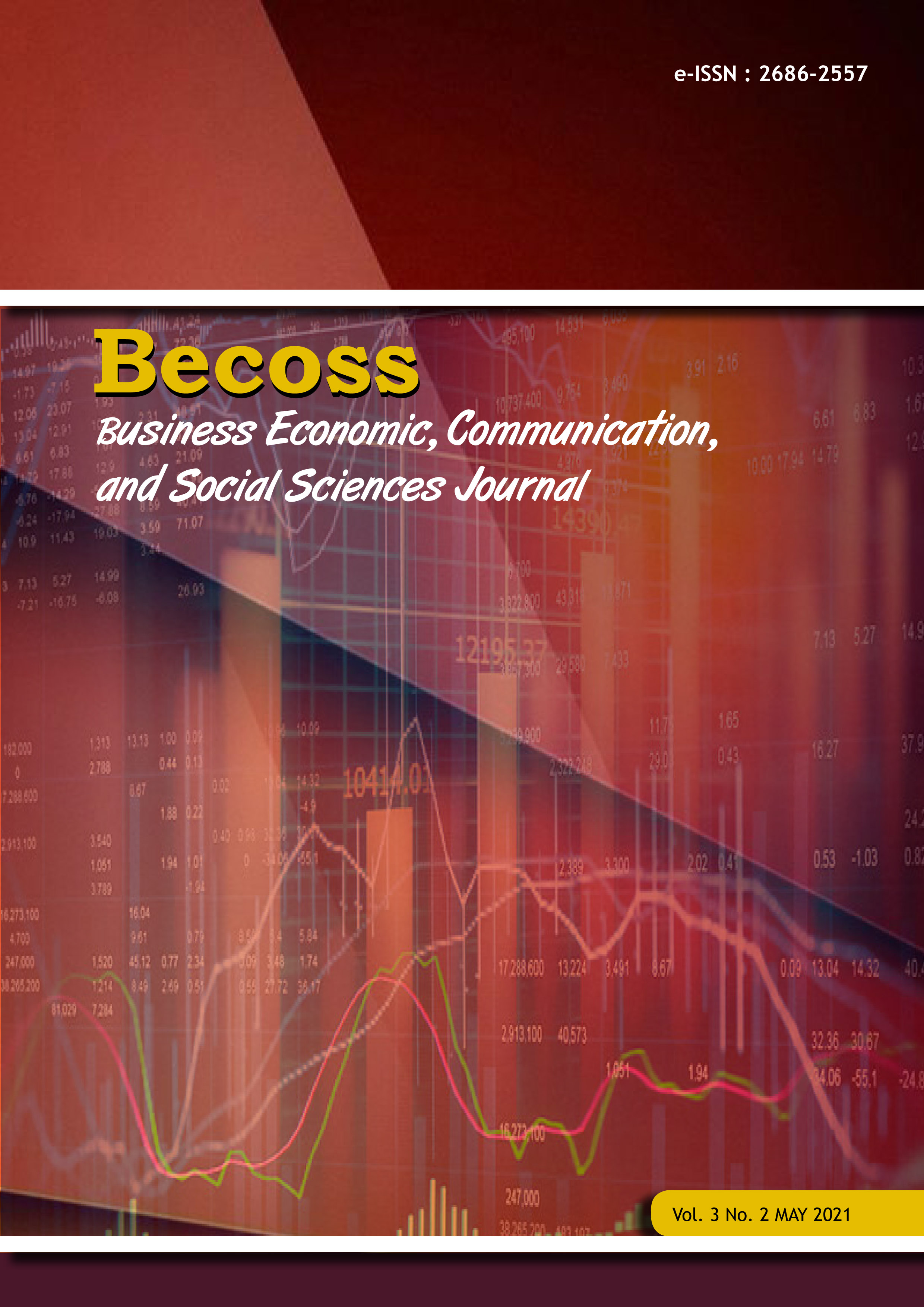Increasing the Selling Value of Indonesian Cultural Products to the Global (Case study of Batik as Indonesian Cultural Identity)
Meningkatkan Nilai Jual Produk Budaya Indonesia kepada Global (Studi Kasus Batik sebagai Identitas Budaya Indonesia)
DOI:
https://doi.org/10.21512/becossjournal.v3i2.7374Keywords:
batik, culture, global, selling valueAbstract
Culture consists of practices, objects, and values ​​in one society. This culture occurs as a result of the emergence of transactions and agreements between certain communities so as to agree on these existing values ​​into the daily life. Even this culture itself is passed down from generation to generation, the identity of this culture demands uniqueness, boundaries, and originality. But the big problem is the strong current of globalization which makes the mingled interactions between one and another culture. Indonesia is rich in culture, which in the past also experienced a lot of acculturation with one another. The uniqueness of Indonesian culture is displayed in many forms, both objects and habits, including performing arts in Bali, phinisi ships, and also batik. Through this research the authors again raise how to increase the selling value of cultural products in Indonesia, by looking at the case studies of traditional batik which innovated into a global approach. This case is discussed from the point of view of Komaruddin Kudiya's success in introducing batik to the global market. The research method was carried out qualitatively, with a cultural and business design approach. The data obtained is based on workshops and seminars, as well as literature obtained online. Furthermore, the data will be studied and analyzed descriptively to produce explanations related to the factors that increase the selling value of batik as a result of Indonesian culture.
References
APPBI. (2020). Diplomasi Melalui Budaya Batik Indonesia untuk Pasar Luar Negeri. Retrieved from https://appbi.org/2021/02/01/diplomasi-melalui-budaya-batik-indonesia-untuk-pasar-luar-negeri/
Kudiya, K., Sabana, S., & Sachari, A. (2017). Symbolic Meaning of the Ornamental Diversity of Cirebon Batik Pegajahan. Mudra Jurnal Seni Budaya, 31(3). https://doi.org/10.31091/mudra.v31i3.42
Kudiya, K., Sabana, S., & Sachari, A. (2014). Revitalisasi Ragam Hias Batik Keraton Cirebon dalam Desain Baru Kreatif. Panggung, 24(2). https://doi.org/10.26742/panggung.v24i2.116
Limano, F. (2019). Sustainability of Indonesian Culture in Global Contemporary Design: Study Case of Buginese Phinisi Ship. https://doi.org/10.4108/eai.26-1-2019.2282906
Sari, S. R., Arifan, F., Triyono, T., & Niswah, U. (2020). Value Chain Analysis on Handmade Batik Products. JEJAK, 13(1). https://doi.org/10.15294/jejak.v13i1.21771
Sylvia, N., & Pradipta B, D. M. (2019). IDENTITAS KOTA BANDUNG PADA BATIK KOMAR BERDASARKAN TEORI KEVIN LYNCH. Narada : Jurnal Desain Dan Seni, 6(2). https://doi.org/10.22441/narada.2019.v6.i2.006
Sudirana, I. W. (2019). Tradisi Versus Moderen: Diskursus Pemahaman Istilah Tradisi dan Moderen di Indonesia. Mudra Jurnal Seni Budaya, 34(1). https://doi.org/10.31091/mudra.v34i1.647
Sugiharto, B. (2019). Kebudayaan dan Kondisi Post Tradisi. Yogyakarta: Kanisius.
Seramasara, I. G. N. (2018). Hindu Religion And Traditional Performing Arts In The Development Of Tourism In Bali. Lekesan: Interdisciplinary Journal of Asia Pacific Arts, 1(2). https://doi.org/10.31091/lekesan.v1i2.524
Surahman, S. (2016). Determinisme Teknologi Komunikasi dan Globalisasi Media Terhadap Seni Budaya Indonesia. REKAM: Jurnal Fotografi, Televisi, Dan Animasi, 12(1). https://doi.org/10.24821/rekam.v12i1.1385
Downloads
Published
How to Cite
Issue
Section
License
Copyright (c) 2021 Business Economic, Communication, and Social Sciences (BECOSS) Journal

This work is licensed under a Creative Commons Attribution-ShareAlike 4.0 International License.
Authors who publish with this journal agree to the following terms:
- Authors retain copyright and grant the journal right of first publication with the work simultaneously licensed under a Creative Commons Attribution License - Share Alike that allows others to share the work with an acknowledgment of the work's authorship and initial publication in this journal.
- Authors are able to enter into separate, additional contractual arrangements for the non-exclusive distribution of the journal's published version of the work (e.g., post it to an institutional repository or publish it in a book), with an acknowledgment of its initial publication in this journal.
- Authors are permitted and encouraged to post their work online (e.g., in institutional repositories or on their website) prior to and during the submission process, as it can lead to productive exchanges, as well as earlier and greater citation of published work.
USER RIGHTS
All articles published Open Access will be immediately and permanently free for everyone to read and download. We are continuously working with our author communities to select the best choice of license options, currently being defined for this journal as follows: Creative Commons Attribution-Share Alike (CC BY-SA)






